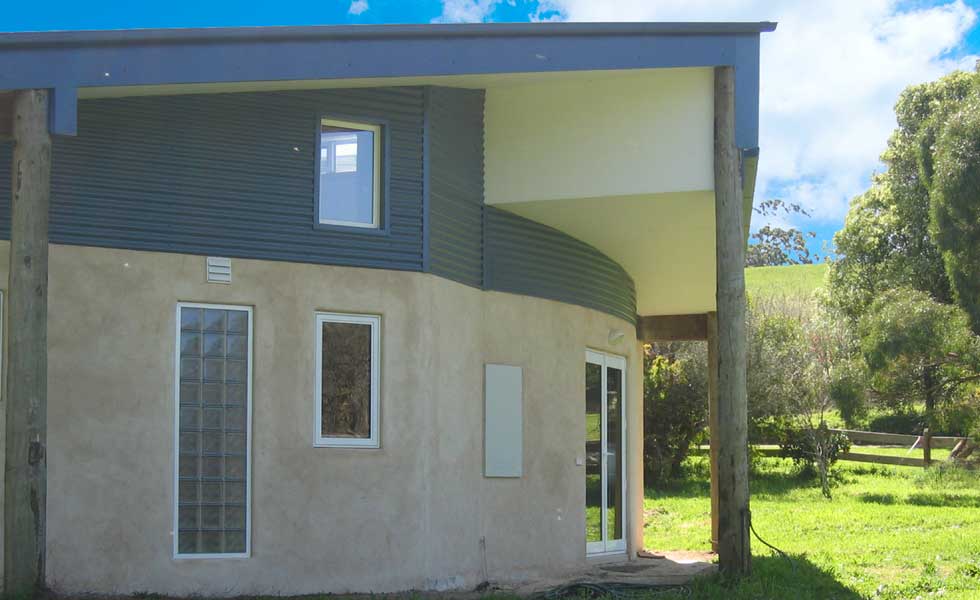How to Make a Zero Energy House

Bridget Puszka
What happens when you put your heart into your beautiful hay bale house
Colin and Libby’s eco hay bale home was their dream home and formed part of their retirement plans. Both Colin and Libby had strong ecological and green living principles. They wanted to incorporate these eco-friendly principles into their new home. They planned to build their hay bale home as they looked forward to retirement and their future bush pepper food business.
Existing post and beam structure
Despite the limitations presented on site with an existing post and beam structure, BP Architects designed a sustainable home. This hay bale home reflects Colin and Libby’s ecological commitment. The design incorporated the current post-and-beam house frame into the new house layout with modifications.
The high insulation value of hay bale
Rendered hay bale walls provide a handcrafted aesthetic particularly suited to a rural environment and outlook. The deep reveals of the windows are telling of the thickness of the walls. Hay bales have a high R-value of R5.5 and provide high levels of insulation to the external walls.
Curved hay bale walls
The modules of hay bales lend themselves to curving the external walls of the living room and the master bedroom in contrast to the rectilinear north-facing facade.
The result is a beautiful handcrafted hay bale home that makes Libby and Colin proud. Natural daylighting provides a bright light living environment. And passive solar design maximizes the winter warmth from the sun. At the same time shading from the summer sun. A comfortable and relaxing living environment. Libby enjoys her private retreat on the mezzanine.
On completion, Colin and Libby set up data loggers to measure the temperature inside and outside their home. They wanted to know how well their home was performing. With the results in, temperatures recorded inside their home stayed mostly within the comfortable air temperatures of between 20 to 25 degree Celsius for most of the year. The outside temperature range varied greatly in comparison.
Colin noted that:
“So it seems a well-designed & well-built house does indeed provide good thermal performance without any further energy input than the sun, wind, and ceiling fans.”

If you would like to know more about how we help our Clients with their architect home designs contact Bridget at BP Architects. You can read the full article on The hay bale Home in the Greenpages Magazine Article.
Send a Message or Schedule Your Free Consultation
At BP Architects we want to make your home better for you and your family. So that you too can have a home that you can be proud of and show off to your family and friends. A home that uses little electricity to run the household. Not to mention, a home that is comfortable all year round. Contact us now and find out how you too can have the home of your dreams.
